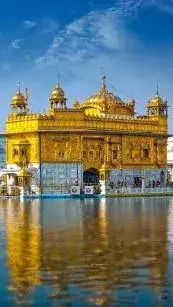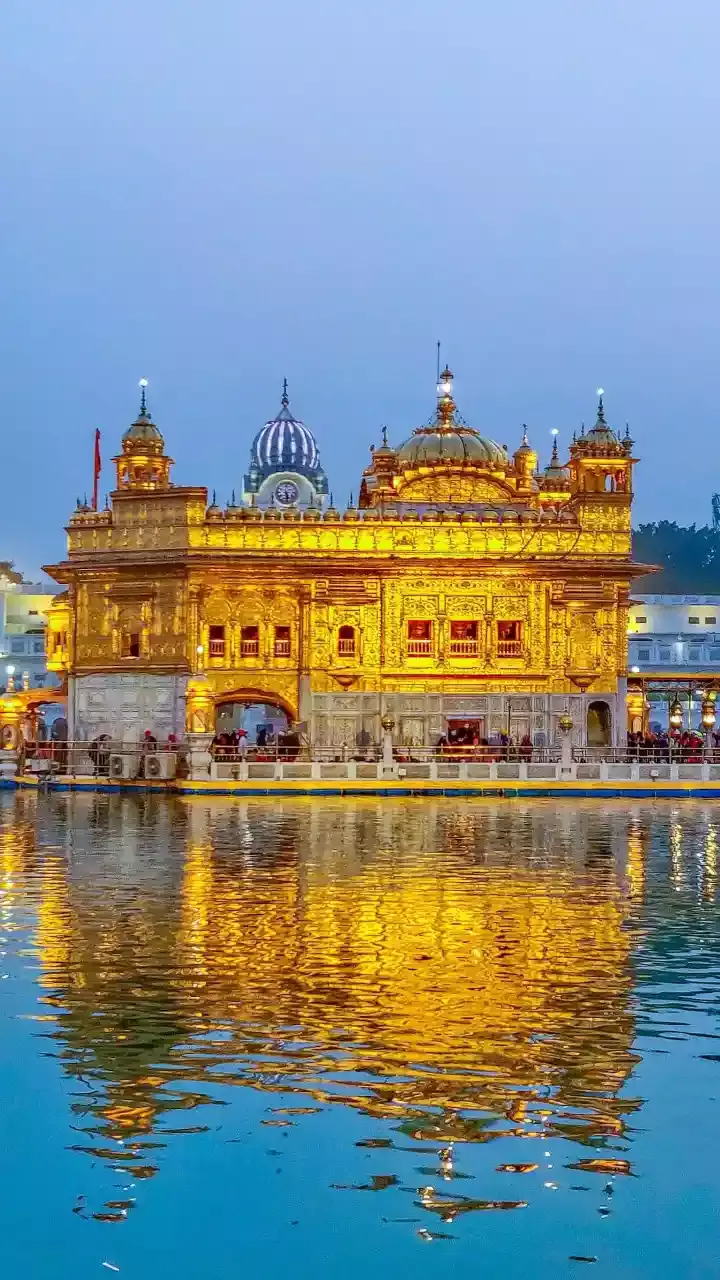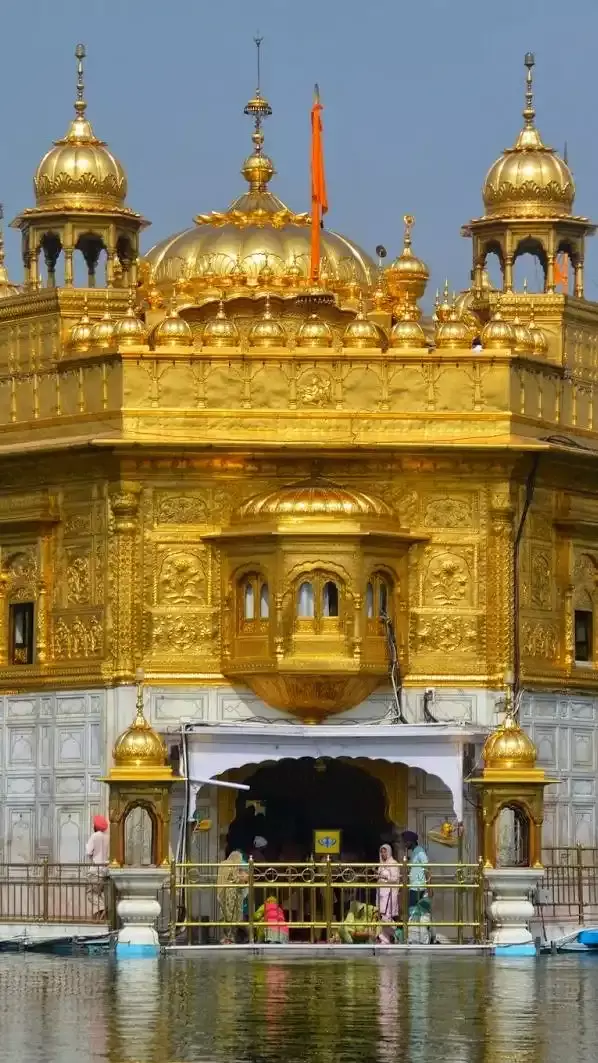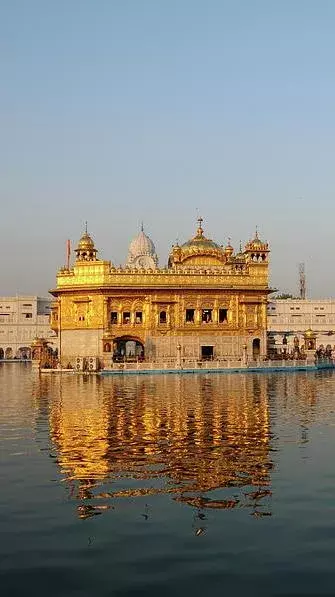
10 Key Facts About the Golden Temple, Amritsar

The Golden Temple was founded by the fourth Sikh Guru, Guru Ram Das, in 1577 and completed by his successor, Guru Arjan Dev, in 1604.

The Guru Granth Sahib, the central religious scripture of Sikhism, is enshrined in the Golden Temple and recited continuously during the day.

The temple is surrounded by a large, sacred pool called the Amrit Sarovar (Pool of Nectar), which is believed to have healing powers.
The Golden Temple operates one of the world's largest free kitchens (langar), serving meals to over 100,000 people daily, regardless of their religion, caste, or nationality.
The temple features a unique blend of Hindu and Islamic architectural styles, with marble and copper construction and a gold leaf-covered upper floor.
The Akal Takht (Throne of the Timeless One), located within the Golden Temple complex, is the highest seat of earthly authority for Sikhs.
The Golden Temple has four entrances, symbolizing openness and acceptance, and it welcomes people of all faiths and backgrounds.
The temple has undergone several renovations, particularly after being damaged during Operation Blue Star in 1984.
Key Sikh festivals such as Vaisakhi, Diwali, and Guru Nanak Gurpurab are celebrated with great fervor at the Golden Temple, attracting pilgrims from around the world.
The Golden Temple is one of India's most visited tourist attractions, drawing millions of visitors annually who come to experience its spiritual ambiance and architectural beauty.